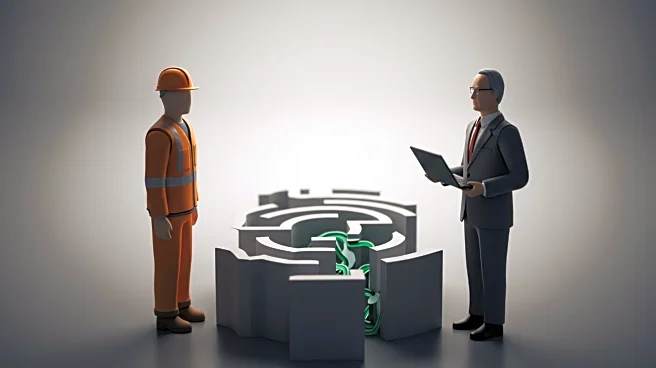What's Happening?
A report based on ZipRecruiter’s Breakroom Workplace Index reveals that only 23% of front-line workers believe senior leaders understand their day-to-day reality. This disconnect is particularly pronounced in industries like agriculture, healthcare, and travel, where operational complexity can make it difficult for leaders to stay connected. The report suggests that organizations have an opportunity to bridge this gap by fostering stronger communication, trust, and alignment between leadership and front-line staff.
Why It's Important?
The disconnect between front-line workers and senior leaders can have significant implications for workplace culture and productivity. When employees feel misunderstood, it can lead to disengagement and decreased morale, affecting overall performance. Addressing this gap is crucial for organizations seeking to improve internal communication and foster a more inclusive and supportive work environment. By understanding the challenges faced by front-line workers, leaders can make more informed decisions that enhance employee satisfaction and retention.
What's Next?
Organizations may take steps to improve communication and understanding between leadership and front-line staff. This could involve implementing regular feedback mechanisms, leadership training programs, and initiatives that promote transparency and collaboration. As companies work to bridge this gap, they may see improvements in employee engagement, productivity, and overall workplace culture.
Beyond the Headlines
The findings of the report highlight the importance of empathy and active listening in leadership. By prioritizing these qualities, leaders can create a more supportive and inclusive work environment that values the contributions of all employees. The focus on bridging the gap between leadership and front-line staff also underscores the need for organizations to adapt to changing workforce dynamics and prioritize employee well-being.











